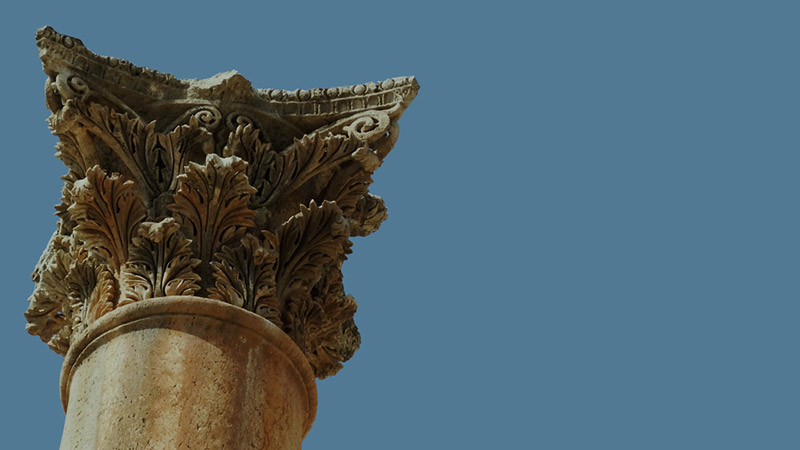Select Marker to See Location Name
You Searched "joy of living water"
-
Devotional
Living in the Dash
-
Volume 6
Lesson 6.4 | Living Stones
-
Volume 12
Lesson 12.5 | They Were Not Wandering
- LOAD MORE
- SHOW ALL
Updating...
Devotional |
Living in the Dash |
Volume 6 |
Lesson 6.4 | Living Stones |
Volume 12 |
Lesson 12.5 | They Were Not Wandering |
Showing 12 of 176

AssyriansThe Assyrian empire was located in Mesopotamia near the Euphrates River. Their reputation was so fierce that Jonah fled in fear when God commanded him to speak in Ninevah, Assyria's capital (Jonah 1:1?3).Assyrian soldiers were equipped wi...
MORE
The fortress of Belvior has both an outer fortification and an inner castle. A moat, hewn out of the same bedrock quarried to build the castle, encircles the structure on three sides. Towers stood in each corner and in the center of the outer wall...
MORE
Herod seized an opportunity to control world trade by building a seaport on Israel's coast, where the sea routes and the predominant land route intersected. Caesarea was a glorious city, covered with marble, and symbolizing the vast wealth that He...
MORE
This photograph shows the remains of the caldarium (hot bath) of the public bathhouse. The floor of this room, now gone, was originally placed on the more than 200 columns seen here. The floor itself was probably a mosaic.The walls were faced with...
MORE
The town of Capernaum stood near the northwest corner of the Sea of Galilee, situated along the busy Via Maris trade route, also known as the 'Way of the Sea.'The prophet Isaiah predicted that the Messiah would live by "the way to the sea,&qu...
MORE
Casting the NetThis modern-day fisherman demonstrates how to use a cast net, one type of net used in New Testament times (Mark 1:16-18). The net is 18 to 25 feet in diameter. The fisherman arranges it on one arm, stands in the boat, and throws it ...
MORE
Cisterns Herod built to provide water during times of siege and to fill his luxurious swimming pools and supply his bathing complexes. The amount of water needed was staggering. There were several swimming pools on top of the desert mountain, wher...
MORE
What was "Cistern Water"In Israel, the rainy season is only five months long, stretching from November through March. Since fresh springs like those at En Gedi are rare, most ancient cities, towns, and even households used cisterns to ca...
MORE
Most cities from the biblical period were fairly small, and people lived in closely knit, well-defined communities. Jerusalem of David's time covered 9-10 acres with a population of 1,500-2,000 persons. Jerusalem during Jesus' time occupied about ...
MORE
To wash, dip, or immerse in water. Baptism shows that a person's sins are washed away. He or she has joined the family of God and is united with Jesus in dying to sin and rising to a new life.
MORE
Bronze basin at the entrance to the tabernacle used for ceremonial purification before sacrifices were made. It also symbolized God's forgiveness after sacrifices were made. Solomon commissioned a large basin for the temple at Jerusalem. It was ov...
MORE
Because water in Israel is hard to come by, most ancient cities, towns, and even households used cisterns to catch and store rain runoff from rooftops, courtyards, and even streets.Cisterns were dug by hand out of solid rock and were plastered so ...
MORE